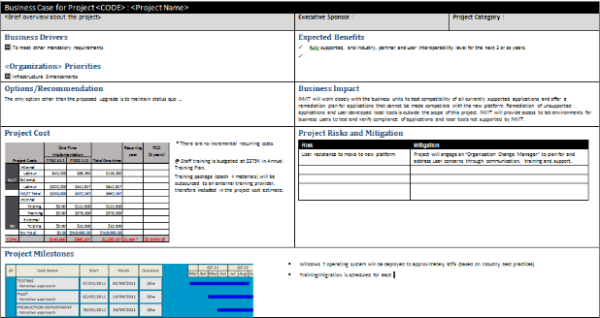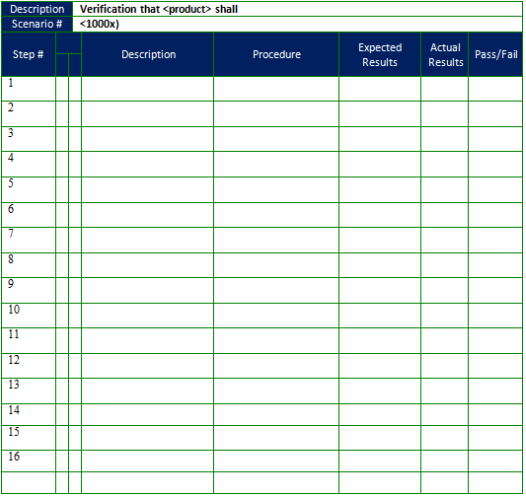WheWant to know how to communicate effectively with stakeholders? The answer is to create a one-page document. There are too many examples where business analysts fail to effectively create a shared and common understanding with stakeholders because they failed to understand the information needs of their audience. This article reviews how to analyze the information needs of your stakeholders and provides examples of how to create one-page documents to communicate with them effectively.
As a project team member, we all want to achieve the following outcomes:
- Reduce waste
- Create solutions
- Complete projects on time
- Improve efficiency
- Document the right requirements
- Identify the causes of problems
The question is how do we, as project team members, work with stakeholders to effectively set and manage their expectations? Let’s first review examples of failed outcomes when we have poor communication in our projects:
- Costly mistakes
- Poor compliance
- Failed or delayed audits
- Inefficiency (people, process, technology)
- High translation costs
- Ineffective documentation and/or training
- Poor quality/best practices
- Low customer satisfaction/high support costs
- Lack of standards
- Incomplete or expensive technology adoption
- Poor product knowledge
One-page documents to communicate effectively with stakeholders
How can we reduce the probability of these poor results on a project? Answer: By improving our communication skills. Let’s start with an overview of the 7 C’s of communication:
-
- Context
- Content
- Components
- Cuts
- Composition
- Contrast
- Consistency
You can improve your communication by thinking about seven “C’s” of communication design: Creating one-page documents to communicate effectively with stakeholders that factor in these seven C’s layout a simple sequence that can help you start broadly and work your way down to specifics.
Here are the seven C’s in order:
1. Context
What’s going on? Do you understand the situation? Is there an elephant in the room? Ask effective questions. You will need a clear goal before you begin to design any communication. Ask the questions: Who are you talking to, and what do you want them to do?
2. Content
Your one-page document should cover specific goals. Based on your goal, define a single question that your communication is designed to answer. This is the best possible measure of communication effectiveness. What do you want your audience to walk away with and remember? Once you have defined your key question, answer it. What information is required? Do you have the answer already, or do you need to search for it?
3. Components
When creating documents to communicate, and before you build anything, break your content down into basic “building blocks” of content. Formulate the information into clusters and groups. What patterns emerge? How can you make the information modular? Given your goal, what is the most basic unit of information? You can even use index cards to break information down into modules.
4. Cuts
This is one of the most difficult parts of the process and the most often neglected. People’s attention will quickly drift—they expect you to get to the point. Be concise, learn to edit, and stay on point.
5. Composition
Now, it is time to design the way you will tell your story. Think of both written and visual composition. When writing, who are your main characters? How will you set the scene? What goals and conflicts will develop? While creating a one-page document to communicate, consider how will the story reach a resolution? In visual terms, where will the reader begin? How will you lead the eye around the page? In all your compositional thinking, how will you engage your audience? How will you keep them engaged? Writing it forces you to think through it.
6. Contrast
What differences matter? Use contrast to highlight them: Big as opposed to little, rough as opposed to smooth, black as opposed to white. When making any point, ask the question, “in comparison with what?” Contrast is a trigger to the brain that says, “Pay attention!”
7. Consistency
Unless you are highlighting differences, keep things such as color, fonts, spacing, and type sizes consistent to avoid distracting people. Any extraneous information detracts from people’s ability to assimilate and learn.
Share the results of the cause analysis with those affected by the problem or solution. Depending on what point in the project lifecycle you have used this technique, you will have different next steps. For example, if you are helping to construct the project or business problem statement, you will want to help document the related objectives and business needs of the project. Alternatively, if you are evaluating the cause of a defect or bug, you will want to communicate your findings to the solution developers so they can adjust them appropriately. Modes of communication could include:
- Formal documents
- Agile scrums or other team meetings
Therefore, when designing communication documents for your stakeholders, you must keep in mind the 7 C’s of communication.
How can you communicate effectively with stakeholders using only a one-page document? Anyone can easily complicate situations with poorly written communication documents (for example, a 30+-page communication strategy), the key to successful communication is to make complicated situations simple to understand and digest for your intended audience.
Start with the following questions when creating communication articles:
- Who is the intended audience?
- Why do they want to know this information?
- Where are they located?
- What is the message?
- When does this message need to be delivered?
- How will you deliver this message?
Knowing information about your audience’s needs will help you communicate more effectively. Let’s review the below example of using one-page documents to communicate effectively with your audience.
Example #1—One-page business case
Who – Executive stakeholders are the audience.
Why – The stakeholders need a yes/no decision to move forward with the project.
Where – For different offices across the country.
What – The document will highlight key points of the business case.
When – For the next steering committee.
How – A high-level summary document will be sent ahead of meetings for executives to review. Detailed business case available on request.
A typical business case can be several pages in length (for example, 20+ pages), but if we wanted to create a summary of the business case so all stakeholders could easily read and understand, then we would create a one-page overview of the document. See the below example:

Example #2—Test case template (used to verify a use case)
Who – Project stakeholders are the audience.
Why – They need to communicate the results to all stakeholders on a project.
Where – For different offices across the country.
What – The document will highlight key points of the test case.
When – To present during testing report summary.
How – The high-level summary document will be sent ahead of the meeting for project team members to review.
NB – Several great tools can help capture and report test results. This is intended for an audience that does not have access to these tools.

Conclusion
Understanding the information needs of your stakeholders is an important part of the project’s successful outcome. The stakeholders’ needs will have to be correctly interpreted and communicated effectively. Different stakeholders perceive the same problem differently, depending on whether they are at the executive, functional, or operational level. They might need different information, and it is your role, as a project team member, to understand their information needs and communicate effectively with these different stakeholders. Knowing how to create one-page documents to communicate effectively with stakeholders.
Reference
Barrett, D., & Vincent, S. (2015). Business analysis book of mentors: 25 lessons learned from seasoned BA professionals. Toronto, Ontario: StringBean Publishing. Retrieved from,
https://studytiger.com/business-communication-seven-cs-of-communication-design-2071/
Similar Content:
-
Is your project communications plan missing the mark with stakeholders?
-
Multi-dimensional communication is key for project success
-
5 Rules for productive team communication

